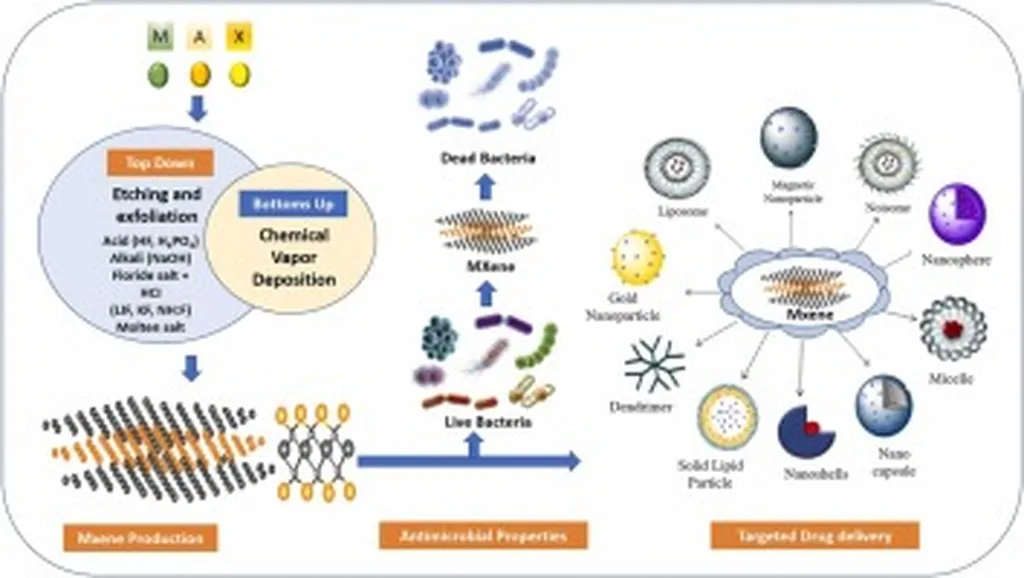In the dynamic intersection of materials science and biomedicine, a groundbreaking study led by Marzieh Ramezani Farani from the NanoBio High-Tech Materials Research Center at Inha University in South Korea is making waves. The research, published in the journal *Bioactive Materials* (translated from Korean as “활성물질”), delves into the biocompatibility and immunomodulatory properties of MXenes, a promising class of two-dimensional nanomaterials. This study could potentially revolutionize drug delivery systems and targeted therapies, with significant implications for the energy sector as well.
MXenes, known for their exceptional physicochemical properties and versatile surface chemistry, have garnered considerable attention in recent years. Ramezani Farani’s research comprehensively examines the interaction of MXenes with proteins, cellular uptake pathways, and the influence of surface functionalization on biological interfaces. “The unique properties of MXenes make them ideal candidates for drug delivery systems,” Ramezani Farani explains. “Their ability to interact with biological systems in a controlled manner opens up new avenues for targeted therapies.”
The study highlights the immunological profile of MXenes, exploring their potential to modulate immune responses within therapeutic contexts. This immunomodulatory capability is crucial for developing treatments that can precisely target diseased cells while minimizing side effects. “Understanding the immunological behavior of MXenes is key to unlocking their full potential in biomedical applications,” Ramezani Farani adds.
One of the most compelling aspects of this research is the assessment of MXenes as nanocarriers for drugs and bioactive compounds. The study analyzes various functionalization strategies and stimuli-responsive release mechanisms aimed at enhancing therapeutic efficacy. This could lead to more effective and personalized treatments, ultimately improving patient outcomes.
However, the journey towards clinical application is not without challenges. Long-term stability, cytotoxicity, and clinical translatability remain significant hurdles. “While the potential of MXenes is immense, we must address these challenges to bring them from the lab to the clinic,” Ramezani Farani acknowledges.
The implications of this research extend beyond the biomedical field. The energy sector could also benefit from the unique properties of MXenes. Their exceptional conductivity and surface chemistry make them promising candidates for energy storage and conversion applications. As the demand for sustainable energy solutions grows, materials like MXenes could play a pivotal role in developing next-generation energy technologies.
This study serves as a vital resource for researchers at the forefront of materials science and biomedicine. It not only advances our understanding of MXenes but also paves the way for innovative applications in drug delivery and targeted therapy. As Ramezani Farani and her team continue to push the boundaries of this exciting field, the future of MXenes in both medicine and energy looks increasingly bright.

